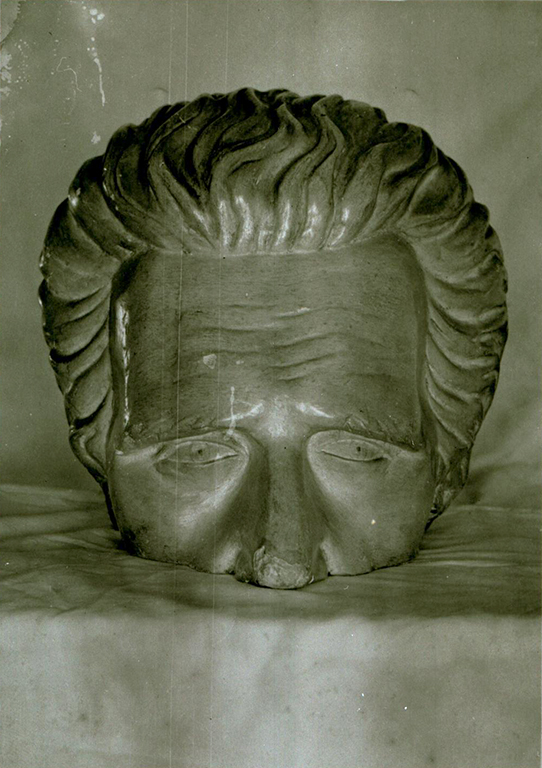When USS Constitution entered Dry Dock 1 in the Charlestown Navy Yard on June 24, 1833, her docking had been delayed so that President Andrew Jackson and Vice President Martin Van Buren, who were en route to Boston, could be in attendance. By the time the presidential party arrived in Boston, however, Jackson was too unwell to attend the 5:30 AM docking. At the time, Jackson was generally well-liked in New England. Jackson fell out of favor less than one year later after he vetoed a bill to recharter the Second Bank of the United States, resulting in financial hardship for merchants.
Just prior to Jackson’s decline in popularity, Jesse Duncan Elliott, the commandant of the Charlestown Navy Yard overseeing Constitution in dry dock, hired a local carver named Laban S. Beecher to create a figurehead of President Jackson, a hero of the War of 1812. When news of the Jackson figurehead broke, Bostonians were horrified. A call went out to “save the ship from this foul disgrace” and threats were made to Beecher. After the figurehead was installed and Constitution refloated from Dry Dock 1, the ship was placed under the protective lee of USS Independence and Columbus. That did not deter one brave local captain named Samuel Worthington Dewey, who took it upon himself to decapitate the offending figurehead 181 years ago today.

On the night of the 2d of July occurred a thunder-storm of unusual violence. The lightning played around the masts of the shipping, and only by its lurid flash could any object be distinguished in the blackness. Young Dewey — he was only twenty-eight — unmoored his boat from Billy Gray’s Wharf in Boston, and, with his oar muffled in an old woollen comforter, sculled out into the darkness.
![Broadside, ca. 1834. [USS Constitution Museum Collection 2253.1]](/wp-content/uploads/2015/06/broadside005.jpg)
Dewey climbed up the Constitution’s side by the man-ropes and ensconced himself in the bow…He extended himself on his back, and in this position sawed off the head. While here he saw the sentry on the wharf from time to time looking earnestly towards the spot where he was at work, but the lightning and the storm each time drove the guard back to the shelter of his box.
Having completed his midnight decapitation Dewey regained his boat, to find her full of water…In this plight, but never forgetting the head he risked his life to obtain, Dewey reached the shore.

After the excitement caused by the affair — and it was of no ordinary kind — had subsided, Dewey packed up the grim and corrugated features he had decapitated and posted off to Washington…
The Captain’s intention to present the head to General Jackson himself was frustrated by the dangerous illness of the President, to whom all access was denied. He however obtained an audience of Mr. Van Buren….Upon Dewey’s announcing himself as the person who had taken off the Constitution’s figure-head Mr. Van Buren gave a great start and was thrown off his usual balance. Recovering himself, he demanded the particulars of the exploit, which seemed to afford him no small satisfaction. Captain Dewey wished him to receive the head.

All of these incidents…stamp [Captain Dewey] as a man of no common decision of character. He resolved, deliberated upon, planned, and executed his enterprise without the assistance of a single individual…He is not the man to commit an act of mere bravado, but is devoted to his convictions of right…We may safely add that he was never a Jackson Democrat.
![Photographic portrait of Samuel Dewey [Courtesy Naval History & Heritage Command Detachment Boston]](/wp-content/uploads/2015/06/dewey004.jpg)
Today, the Museum of the City of New York has in its collection the original Beecher figurehead with a second head carved by Dodge & Sons of New York in 1834. The museum also has the original Beecher head decapitated by Dewey.


[All quotes from Historic Mansions and Highways Around Boston (1906), by Samuel Adams Drake, pages 41-44.]
The Author(s)
Margherita Desy, Historian, Naval History and Heritage Command Detachment Boston
Historian, Naval History and Heritage Command
Margherita M. Desy is the Historian for USS Constitution at Naval History and Heritage Command Detachment Boston.
Kate Monea
Manager of Curatorial Affairs, USS Constitution Museum
Kate Monea is the Manager of Curatorial Affairs at the USS Constitution Museum.
